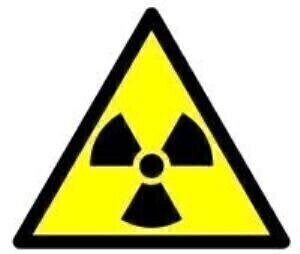Environmental Laboratory
Minamata Bay: The Fatal Difference Between Mercury and Methylmercury
Apr 19 2023
Minamata Bay, situated in Kumamoto Prefecture, Japan, is the site of one of the world's most infamous cases of industrial pollution. The devastating consequences of the release of methylmercury into the environment in the 1950s and 1960s led to a severe outbreak of Minamata disease, a debilitating neurological disorder. The tragic events that unfolded in Minamata Bay illustrate the fatal difference between mercury and its organic form, methylmercury. This article delves into the chemical properties and implications for toxicology of these two compounds for a specialist scientific audience.
Mercury: Elemental and Inorganic Forms
Mercury (Hg) is a naturally occurring heavy metal that exists in various forms, including elemental mercury (Hg^0) and inorganic mercury compounds (Hg^1+ and Hg^2+). Elemental mercury is a liquid at room temperature, and its high vapor pressure causes it to readily evaporate into the atmosphere. Inorganic mercury compounds, such as mercuric chloride (HgCl2) and mercurous chloride (Hg2Cl2), can be toxic upon ingestion, inhalation, or dermal exposure, but their solubility and bioavailability are generally lower compared to organic mercury compounds.
Methylmercury: Formation and Properties
Methylmercury (CH3Hg+) is an organic form of mercury produced through the methylation of inorganic mercury by anaerobic microorganisms, predominantly in aquatic environments. The process involves the transfer of a methyl group (-CH3) from a methyl donor molecule to the mercury ion (Hg^2+), forming the highly toxic and bioavailable methylmercury cation. Methylmercury is lipophilic and can readily pass through biological membranes, enabling it to accumulate in the fatty tissues of organisms.
Bioaccumulation and Biomagnification
Methylmercury's lipophilic nature and resistance to degradation make it prone to bioaccumulation in living organisms. Through the process of biomagnification, methylmercury concentrations increase as it moves up the food chain. In aquatic ecosystems, small organisms, such as phytoplankton and zooplankton, take up methylmercury from their surroundings. These organisms are then consumed by larger aquatic species, and so forth, eventually leading to high concentrations of methylmercury in top predators like large fish and marine mammals.
Toxicity of Methylmercury
Methylmercury is a potent neurotoxin that targets the central nervous system. It can easily cross the blood-brain barrier, and its lipophilic nature allows it to accumulate in brain tissue, leading to neurotoxic effects. Methylmercury exposure is particularly hazardous during fetal development, as it can readily cross the placenta and cause severe neurological damage to the developing fetus.
Methylmercury-induced neurotoxicity primarily results from its ability to bind to sulfhydryl groups on proteins, disrupting cellular function and causing oxidative stress. Methylmercury can also interfere with neurotransmitter release, impair cellular respiration, and disrupt the function of membrane ion channels.
The Minamata Bay Disaster
The Chisso Corporation, a chemical manufacturing company in Minamata, released industrial wastewater containing inorganic mercury into Minamata Bay from 1932 to 1968. Bacteria in the bay's sediment converted the inorganic mercury into methylmercury, which then accumulated in fish and shellfish. Local residents, who relied on seafood as a dietary staple, unknowingly consumed methylmercury-contaminated fish, leading to the outbreak of Minamata disease.
Minamata disease is characterized by severe neurological symptoms, including ataxia, tremors, muscle weakness, and sensory disturbances. It can also cause neuropsychiatric symptoms, such as cognitive impairment, emotional instability, and memory loss. In severe cases, Minamata disease can lead to paralysis, coma, and ultimately, death. The outbreak in Minamata Bay had particularly devastating consequences for pregnant women, as methylmercury exposure during pregnancy resulted in infants being born with congenital Minamata disease, which manifested as severe mental and physical disabilities.
The Legacy of Minamata Bay
The disaster in Minamata Bay served as a catalyst for environmental and public health policy reform in Japan and around the world. In the aftermath of the tragedy, Japan implemented stringent regulations on industrial pollution, and monitoring of mercury levels in the environment and food supply became a priority. Internationally, the Minamata Convention on Mercury was adopted in 2013 as a global treaty aimed at reducing mercury pollution and protecting human health and the environment from the adverse effects of mercury.
The Minamata Bay disaster also underscored the importance of understanding the toxicological differences between mercury and methylmercury. While both compounds can be toxic, the bioaccumulation and biomagnification properties of methylmercury make it far more dangerous, particularly in aquatic ecosystems. The outbreak of Minamata disease demonstrated the catastrophic consequences of releasing methylmercury into the environment and serves as a stark reminder of the need for ongoing research, monitoring, and regulation to prevent similar disasters in the future.
The events that transpired in Minamata Bay highlight the critical difference between mercury and methylmercury, both in terms of their chemical properties and toxicological effects. As a potent neurotoxin, methylmercury poses significant risks to human health, particularly during fetal development. The Minamata Bay disaster emphasized the importance of understanding these risks and implementing comprehensive environmental and public health policies to mitigate the impact of mercury pollution. The legacy of Minamata Bay serves as a cautionary tale for the scientific community and the world at large, reminding us of the importance of vigilant monitoring and regulation to prevent future catastrophes.
Digital Edition
AET 28.2 April/May 2024
May 2024
Business News - Teledyne Marine expands with the acquisition of Valeport - Signal partners with gas analysis experts in Korea Air Monitoring - Continuous Fine Particulate Emission Monitor...
View all digital editions
Events
Jul 30 2024 Jakarta, Indonesia
China Energy Summit & Exhibition
Jul 31 2024 Beijing, China
2024 Beijing International Coal & Mining Exhibition
Aug 07 2024 Beijing, China
IWA World Water Congress & Exhibition
Aug 11 2024 Toronto, Canada
Aug 25 2024 Stockholm, Sweden and online










.jpg)








